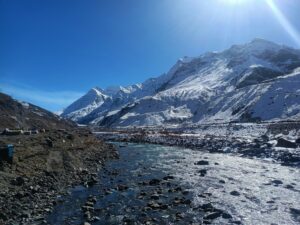
Planning a trekking expedition is both exciting and challenging. Whether you are a first-timer or a seasoned trekker, preparation is crucial to ensure your journey is safe, enjoyable, and fulfilling. This complete guide will walk you through everything you need to know before setting out on your next trekking expedition.
1. Choose Your Destination Wisely
The first step in planning a trekking expedition is selecting the right trail. Consider your fitness level, experience, time availability, and weather conditions. For beginners, easy to moderate treks like Triund (Himachal Pradesh), Sandakphu (West Bengal), or Kedarkantha (Uttarakhand) are ideal. Experienced trekkers can opt for challenging routes such as the Goechala Trek (Sikkim), Markha Valley (Ladakh), or even international expeditions like the Everest Base Camp (Nepal).
2. Research the Best Season
Every trekking expedition destination has its ideal season. For instance, Himalayan treks are best done between April-June or September-November, while South Indian treks can be done post-monsoon. Researching the weather ensures safer trails, clearer views, and fewer surprises.
3. Prepare Physically and Mentally
A trekking expedition demands stamina, strength, and endurance. Start training at least a month in advance. Include cardio exercises like running, cycling, and stair climbing along with core strengthening and flexibility workouts. Mental preparation is equally important; train yourself to walk with a backpack for hours and manage changing weather conditions calmly.
4. Pack the Right Gear
Your backpack should include essentials without being too heavy. Key items for your trekking expedition include:
- Backpack (40-60L) with rain cover
- Trekking shoes with strong grip
- Clothing: quick-dry t-shirts, thermals, fleece jacket, down jacket (for high altitude), waterproof jacket, trekking pants
- Accessories: gloves, woollen cap, sun cap, sunglasses, trekking poles
- Sleeping bag and liner (if not provided by the trek organiser)
- Headlamp with extra batteries
- Personal medical kit including altitude sickness medicines
- Reusable water bottles or hydration pack
- Energy snacks like nuts, protein bars, and ORS sachets
- Toiletries and biodegradable soap
5. Plan Your Food and Hydration
If trekking with an organiser, food is usually taken care of. If going solo or with friends, plan your meals well. Carry ready-to-eat foods, energy bars, and light snacks. Hydration is crucial. Drink at least 3-4 litres of water daily during your trekking expedition to avoid dehydration and altitude sickness.
6. Acclimatisation is Key
High-altitude trekking expeditions demand proper acclimatisation to prevent Acute Mountain Sickness (AMS). Ascend gradually, take rest days as required, and follow the ‘climb high, sleep low’ principle. Listen to your body and inform your guide if you feel symptoms like headache, dizziness, or nausea.
7. Choose the Right Trek Organiser
If you’re new to trekking, choose a certified trekking company with trained guides, quality equipment, and good reviews. They ensure safety, provide local insights, and handle logistics efficiently, making your trekking expedition smooth and enjoyable.
8. Understand Environmental Responsibility
A trekking expedition should leave no trace behind. Carry reusable bottles, avoid plastic, carry back all waste, and respect local customs. Stay on marked trails to protect flora and fauna. Responsible trekking ensures these trails remain pristine for generations to come.
9. Manage Permits and Documentation
Many trekking expedition routes, especially in Sikkim, Ladakh, or Uttarakhand, require permits. Always check the official tourism department websites or confirm with your trek organiser beforehand. Carry government IDs and passport-sized photos as required for permits and registrations.
10. Know Emergency Protocols
Understanding basic first aid, altitude sickness symptoms, and evacuation procedures is essential. Keep emergency contact numbers handy. If trekking in remote areas, satellite phones or GPS devices can be life-saving.
Why Go on a Trekking Expedition?
A trekking expedition is more than just a physical journey; it is a path to self-discovery, resilience, and spiritual growth. Walking through dense forests, crossing icy rivers, or climbing steep ridges instils confidence and humbles you at the same time. It teaches patience, strengthens your body, and calms your mind.
Final Thoughts
Planning your trekking expedition thoroughly ensures you enjoy every moment without worries. Choose the right trail, prepare well, respect nature, and embrace every challenge with positivity. Remember, the best views come after the hardest climbs, and your next trekking expedition might just be the life-changing adventure you’ve been waiting for.








